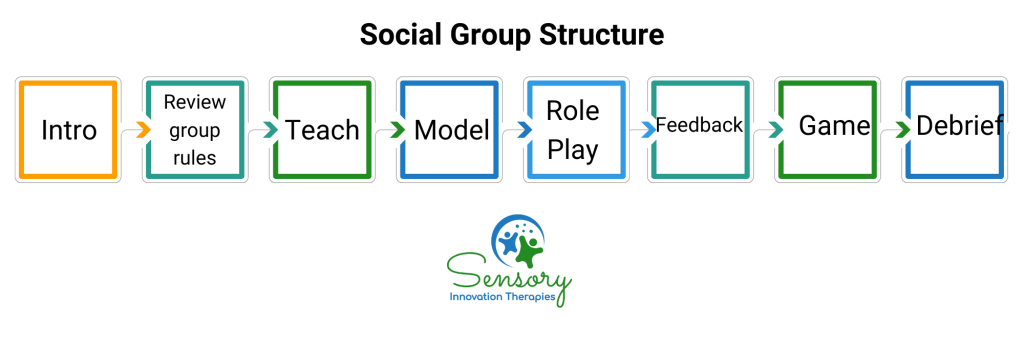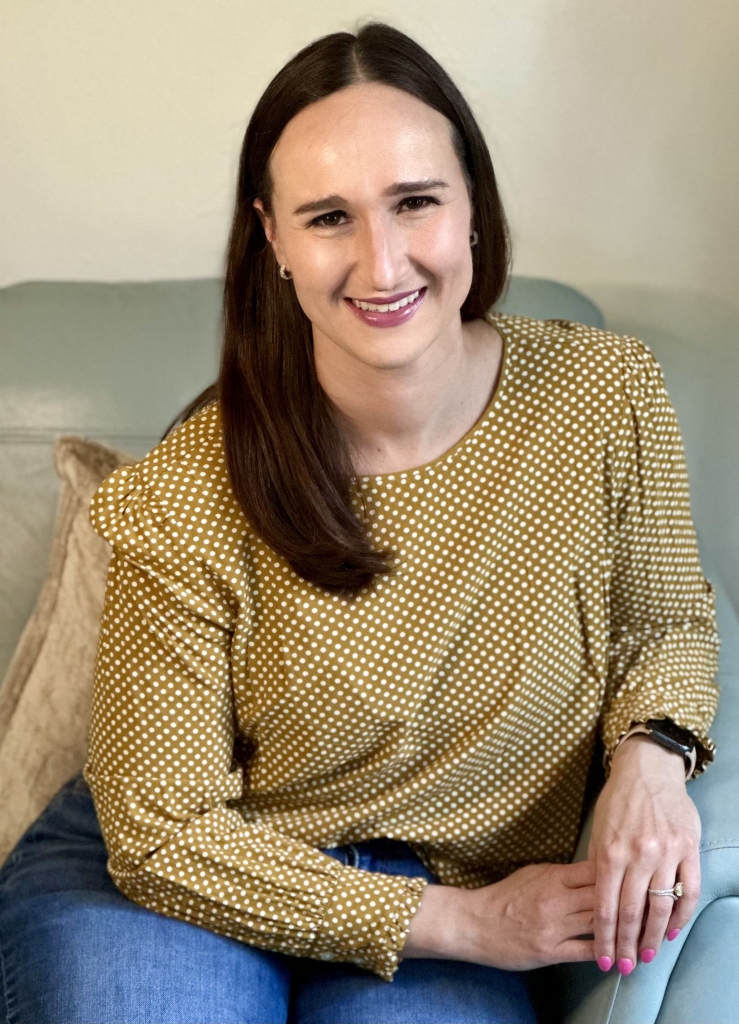Children with diverse learning needs often have difficulty making friends organically and forming friendships. Neurodiverse children sometimes have difficulty reading social cues, initiating and continuing peer interactions, and navigating peer conflict, which leads to difficulty making and keeping friends. This isolation from peers could result in decreased self-esteem, feelings of loneliness, increased depression, and a decreased perceived quality of life (Black, et. al, 2022). Social groups are a great way to build social skills for neurodiverse learners.
Creating a supportive environment for neurodiverse children to learn social skills, practice these skills with a qualified professional, and coach parents on implementing these skills outside of the structured environment is needed in the neurodiverse community. A supportive environment includes a small group size no larger than 6 children/adolescents, a room set up with decreased stimuli and sensory equipment, and curriculum and materials made accessible to the learner.
Structured social groups can offer a learning opportunity for neurodiverse children, adolescents, and teens to learn specific social skills that they can practice in the group and use outside the group. Additionally, the group can offer a means for individuals with similar profiles to meet and form relationships. The interactions offered during a social group can be the foundation for a friendship that the group members may not have otherwise experienced. Thus, social groups not only teach skills but also offer a way for neurodiverse individuals to meet others that are similar to foster a relationship together.
Strategically structuring the social groups and creating a curriculum relevant to the group members is vital to the success of the group.
Group Structure
A consistent group structure allows group members to feel comfortable with the expectations for their time in the group. Skillstreaming has been found to be an effective structure for implementing social skills for individuals with diverse learning needs (Lopata, et. al, 2010). The below structure is based on this evidence-based practice:
Introduction
The group facilitator welcomes the group and introduces themselves, and then gives the opportunity for each group member to introduce themselves. This can be expanded to adding in a fun fact about themselves (i.e. favorite animal, favorite color, one place they’d like to visit, etc.).
Review group norms and rules
During the first group, the group will cohesively decide on the group norms and rules, with the assistance of the group facilitator. A few areas to address in the rules include:
- Stay in your area
- Raise your hand to speak
- Keep self-to-self
- Use listening ears
Addressing seated behaviors, monitoring when to speak, having a safe body, and active listening are all pro-social behaviors. Ingraining them into the rules and norms of the social group space facilitates another layer of addressing social skills and social norms.
Teaching
Providing the instruction in a way that is accessible to the learner is imperative to the group members understanding of the learning material. Visuals, including pictures, written words, and videos, combined with simple verbal teaching typically works best for neurodiverse learners. Additionally, adding songs and music can help convey an idea. The group facilitator will need to take all of the group members’ strengths and areas for growth into consideration when developing how to teach the material to the learners.
Modeling
After teaching the concept, the group facilitator will model what the skill looks like. Using pictures and videos can be helpful when modeling.
Role-playing
The group facilitator will then pair off group members (according to developmental level) to role-play the skill using a situation given by the group facilitator. Group members should have access to any communication system, including written, AAC, PECs, or the use of an iPad.
Performance feedback
Peers will then provide feedback to each other on how they did with the social skill. Group members should be reminded of how to give constructive feedback (i.e. saying something the peer did well followed by something the peer should work on).
Game
After the social skill is taught and practiced, the group can implement the skill in a more naturalistic way by playing a game. Ideas for games include:
- Drawing an animal you’re most like then tell the group about it.
- Making a self-portrait using magazine cutouts then tell the group about why you chose the pictures you did.
- Playing a board game
- Creating a construction project (of the group facilitator’s choosing) and working with a partner to build with one hand.
- Blindfolded obstacle course with a peer partner leading the group member through the obstacle course.
- Mother May I
- Facial Pictionary for emotions
- Facial collage with magazine cutouts of different emotions
- Emotions bingo
- Volleyball using a balloon with the goal of not letting the balloon touch the ground
- Scavenger hunt for different items in magazines
Debrief: The group facilitator reviews the performance of the group through motivational interviewing, including the positive events in the group, areas to work on, what group members learned, and reviewing how group members can use the skill taught outside of the group.

Social Group Topics
At Sensory Innovation Therapies, we created an 8-week structured social group focusing on relationship skills, social comprehension, self-regulation, and understanding emotions. Sessions are 60 minutes and below is an outline created for the group:
Week 1: Introducing yourself and contributing to discussions
Week 2: Active listening and giving a compliment
Week 3: Being a good sport and face recognition
Week 4: Giving instructions and having a conversation
Week 5: Asking a question and asking for help
Week 6: Following instructions and face and emotion recognition
Week 7: Joining in and offering help to an adult
Week 8: Ending a conversation and offering help to a peer
The topics are then used as a framework for the conversations during the games. Teaching distinct topics in each group allows the skills to build upon each other each week.
If you’re interested in signing your child up for the 8-week Social Skills Group at Sensory Innovation Therapies in Stuart, Fl, click below to get started.
Resources
Lopata C., Thomeer M., Volker M., Toomey J., Nida R., Lee G., Rodgers J. (2010). RCT of a manualized social treatment for high-functioning autism spectrum disorders. Journal of Autism and Developmental Disorders, 40, 1297–1310.
About the Author

Dr. Leah Dunleavy, M.A., BCBA, OTR/L, OTD is an occupational therapist and behavior analyst and the owner of Sensory Innovation Therapies located in South Florida’s Treasure Coast. She serves families in the home and school setting in St. Lucie, Martin, and Palm Beach Counties. Dr. Leah has been working with the neurodiverse population for over 15 years, and has been practicing, managing, and mentoring in Chicago for the last 10 years. She has brought her expertise in sensory processing back to her hometown to support her community. Dr. Leah uses a relationship-based approach to guide families to meet their goals.
